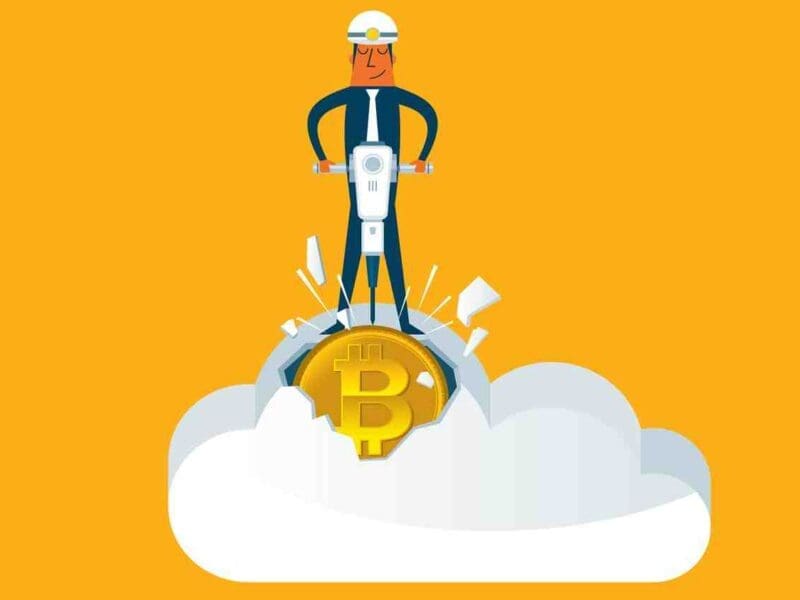
Cryptocurrency Mining: Understanding the Process
Many people are interested in cryptocurrencies, and more and more people are investing. But even among those who regularly trade in cryptocurrency, only some understand the underlying technology. That’s why a cryptocurrency guide is more suitable for beginners, where information about the virtual coin market and so on is described in more detail.
This is because cryptocurrencies are currently used mainly as a speculative tool. Many people are chasing profits and don’t care about anything else. It takes minimal technical knowledge to get involved in trading. But it is helpful to know the basics. Ability can eliminate the uncertainty and doubt that still make up much of the broader public opinion about Bitcoin and other cryptocurrencies.
What is crypto mining?
Cryptomining is the “mining” of units of a cryptocurrency transaction such as Bitcoin. Since such purely digital currencies are not managed and issued by states or banks, they require so-called crypto miners who record, verify and book all transactions. This is the only way to ensure that only one transaction is carried out at a time with a monetary unit. Cryptominers are paid pro rata after the transaction has been successfully processed.
This process is called mining because of its many parallels to gold mining. Both scenarios require significant labor and energy consumption to produce a valuable commodity.
History of cryptocurrency mining
When Bitcoin appeared in 2009, the first mining was done by processors. The first miner was the official Bitcoin miner. Note that Bitcoin Core is the first and official Bitcoin miner to use a processor for mining. Currently, it is only useful to mine with Bitcoin Core.
Soon after, the first GPU miner was developed, allowing users to reach higher speeds using GPUs. Shortly after, CPU mining stopped profiting because miners took over GPU mining.
The history of mining can be divided into several parts:
- Bitcoin was introduced in 2011. It contained a new algorithm called Scrypt. This was before ASIC SHA256 (bitcoin) took over the Bitcoin network. Soon after Bitcoin’s complexity increased, all GPU miners could switch to another project and keep mining profitable.
- In 2013, the famous Dogecoin was launched. Doge also uses the Scrypt algorithm for its PoW consensus. Doge was also mined using GPUs and offered higher profitability for a while.
- In 2014, the ZeusMiner was released. The first Scrypt ASIC miner. This ended the era of Scrypt GPU mining. GPU miners, in turn, did not have a profitable coin to mine.
- In 2014, Monero was launched. At the time, Monero used the Cryptonight algorithm. Miners could use CPUs and GPUs to mine. The Monero community also opposes ASIC miners. Monero has branched out three times in its history and uses the RandomX algorithm to protect against ASICs.
- Vertcoin was launched in 2014. Vertcoin was one of the first cryptocurrency projects designed to be ASIC-resistant. GPU miners were once again able to profit for a short period.
- Ethereum was launched in 2015. Ethereum also cracked down hard on ASIC miners because they threatened decentralization. Ethereum uses the Ethash algorithm (a modified DaggerHashimoto). As the price of Ethereum rose in its first year, the profitability of mining increased again.
These are the main stages of the formation of mining. Of course, the chronology of highlights will continue over time.
Features of mining
First, let’s take a look at how cryptocurrency mining works. The name “mining” is a bit misleading, as it is not just about generating new coins, i.e. “mining”. Crypto mining has two goals: developing new cryptocurrency (which is what we instinctively think of when we think of “mining”) and validating transactions with cryptocurrencies on their blockchain.
For example, when Bitcoin miners complete the verification of a block of multiple transactions, they receive a reward for doing so. But what exactly does this reward look like? They receive newly generated Bitcoins that go into their wallet and simultaneously increase the number of all Bitcoins in circulation.
For processing information, the owner of a computer resource receives remuneration in the form of a commission assigned by the owner of virtual money or compensation in the form of a part of the cryptocurrency emitted in the mining process. This is the basis of one of the main principles of payment systems involving the use of bitcoins and some other virtual money. The transactions where the highest commission is set are processed and conducted first. Therefore, transactions with zero commission can take a very long time.
Methods of mining:
- Investing in the proper computer hardware is the first step to starting the Bitcoin mining process. A faster and more powerful computer increases your chances of success. Anyone can do cryptocurrency transactions. You need to run mining software on your computer. But you will likely find a worthwhile profit with some research. ASICS performs only certain types of arithmetic operations required for mining cryptocurrency. They are noisy and hot devices, not suitable for home environments. Is cryptocurrency mining profitable? It can be beneficial. But to make a fortune mining bitcoins, you must be willing to shell out a lot of money for custom equipment.
- Miners quickly realized they could increase their profits by combining multiple GPU blocks. As a result, entire mining farms are being built in regions with affordable access to electricity and computer equipment. These farms have turned many miners into millionaires. Some mining companies have even outsourced their computing power, renting it out to consumers. Given the growing popularity of Bitcoin mining, some people have begun to form so-called mining pools, which increase the chances of rewards.
Ethereum gained popularity in 2016 and 2017. Also, because it brought enormous profits to users with home computers, added to that was the growing market, which also led to big profits.
What do you need for mining?
Mining on an ordinary laptop is useless for beginners because it takes quite a lot of time and computing power to mine cryptocurrencies effectively. Regarding mining hardware, you should arm yourself with a particular mining installation (electronic data processing system). The structure you need depends on the currency you want to mine: bitcoins, for example, are mostly mined with ASIC (Application-Specific Integrated Circuit) installations, each of which can cost thousands of euros. Also, remember power consumption. You will consume a lot of electricity and should look for the cheapest electricity rate.
Is there a future for mining
The future of mining depends on many factors. It is impossible to determine whether Bitcoin mining is generally profitable. There are too many variables: equipment costs and required energy vary worldwide. The expected results depend on the miner’s ability to compete with a growing number of competitors for the same mining rewards.
Just as a miner’s probability of finding a nugget would decrease if more people were digging in the same area, a bitcoin miner’s chances of getting new bitcoins and transaction fees decrease when competition in the cryptocurrency market intensifies. There are no other Bitcoin reserves, and miners must compete or give up the same treasure.







